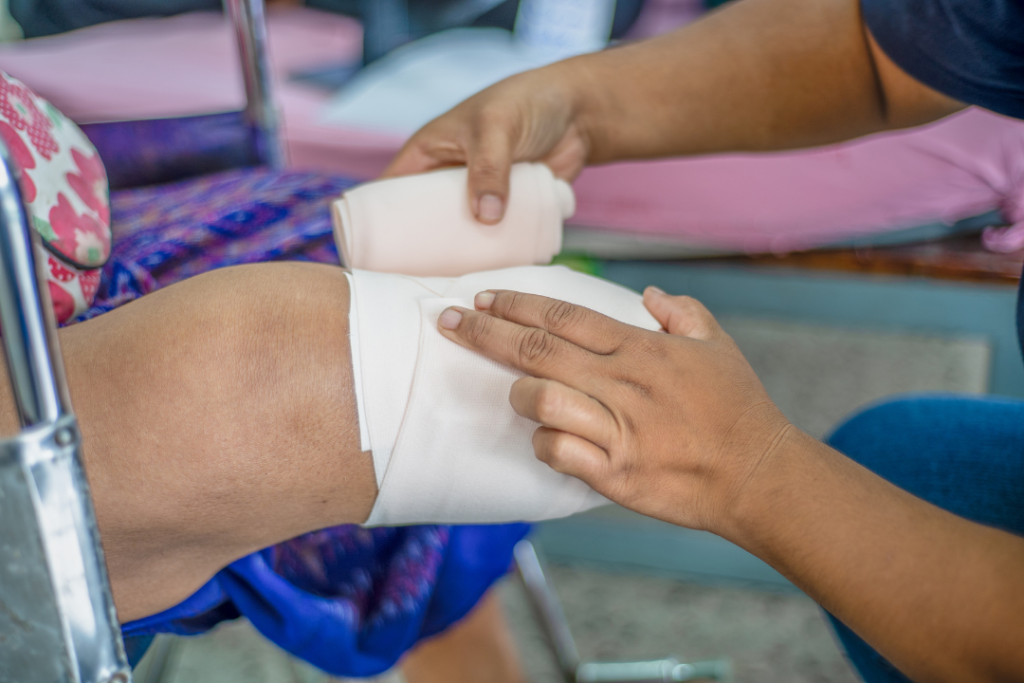
If you’ve been watching a wound for days—or even weeks—without seeing much improvement, you’re not alone. A wound not closing is more than just frustrating. It’s often a warning sign that something deeper is going on beneath the surface.
At Advanced Wound Therapy, we see this scenario every day. Patients reach out after trying ointments, dressings, or even antibiotics, only to realize their wound still hasn’t closed. The truth is, healing isn’t just about time. It’s about making sure the right conditions are in place—both around the wound and inside the body.
Here’s why a wound may not be closing, and what you can do about it before things get worse.
Healing is a complex biological process. For a wound to close properly, multiple systems in the body need to work together—including your circulation, immune system, skin integrity, and even mobility. If something is off in any of these areas, the wound may stall or even worsen.
Here are the most common reasons we see wounds stay open longer than they should:
Without strong blood flow, wounds can’t get the oxygen and nutrients needed for tissue repair. This is especially common in patients with:
If your legs or feet are cold, pale, or painful, poor circulation could be part of the problem.
When blood sugar is consistently high, the body’s ability to heal slows down. High glucose levels affect your immune response, circulation, and nerve sensitivity—all of which increase the risk of infection and delayed closure.
A wound not closing on a diabetic patient should never be ignored. It may be an early sign of more serious complications.
Sometimes infection is obvious—redness, heat, odor, or pus. But in many cases, infection lingers beneath the surface and quietly prevents healing. A stalled wound with increased drainage or changing color may be infected, even if you don’t have a fever.
Wounds on the heel, foot, or tailbone can’t close if they’re constantly being pressed or rubbed. This is especially true for patients who are non-ambulatory or spend long hours in bed or a chair.
Even with good dressings, if pressure isn’t relieved, the wound won’t make progress.
Not all wounds need the same kind of dressing. Using the wrong materials can keep a wound too wet, too dry, or exposed to bacteria. Over-the-counter bandages are rarely enough for deeper or chronic wounds.
Conditions like lymphedema, kidney disease, malnutrition, or autoimmune disorders can all affect how quickly your wound recovers. In these cases, the wound is often just the symptom—not the root issue.
A wound that won’t close is at risk for:
The longer a wound stays open, the harder it becomes to treat. That’s why early intervention is key.
At Advanced Wound Therapy, we specialize in wounds that haven’t followed the typical healing timeline. We come to you, assess the wound right in your home, and build a care plan based on the full picture—not just what’s on the surface.
Here’s how we approach care when we’re dealing with a wound not closing:
We don’t just measure the wound. We assess circulation, check for infection, review your medical history, and look at lifestyle factors like mobility and support at home.
If the tissue isn’t clean and ready to heal, it won’t matter what dressing you use. We perform appropriate cleaning, debridement and apply dressings that match the wound’s specific needs.
In certain cases, we may recommend an amniotic graft to support wound management. These advanced tools are used selectively when wounds need help regulating moisture, protecting exposed areas, or breaking out of a stalled phase. Learn more about this option in this peer-reviewed study.
Wound care isn’t one-size-fits-all. We continue to visit, monitor progress, and make adjustments in real time—so your wound keeps moving in the right direction.
If your wound has been open for more than 10–14 days without visible improvement, it’s time to call a specialist. You should also reach out if:
These are signs that the wound may be stalled—or worse, infected.
A wound not closing is never something to take lightly. But the good news is, it’s often treatable when the right care is applied at the right time.
Advanced Wound Therapy brings professional, hospital-grade wound care directly to your home. We understand the frustration that comes with a stubborn wound—and we know how to get it back on track. From tailored dressing strategies to advanced graft applications, we’re here to support you every step of the way.
If your wound has stopped improving, let’s change that. Reach out to AWT today and schedule a personalized, in-home wound assessment.
Author: Matt Carmichael, DO
Don't wait—get the expert wound care you need. Schedule your consultation with Advanced Wound Therapy today.